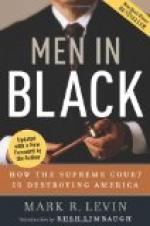It seems more practical and sensible that the lawyers for the defendant should be required to state the nature and detail the facts of his defense. It is the difference between the old idea of trial and the new. The first was an imitation battle, the new idea is not that it is so much a struggle as an investigation of the facts. If the plaintiff wants to meet the receipt he can make a counter-attack or explanation in the rebuttal and explain how he came to sign the receipt in full. The judge and the jury feel the necessary element of the trial is to arrive at the facts and that the planning and methods of charge and counter-charge are not so significant. The old conception of the trial as a battle is disappearing.
The opening by the defendant at the beginning directly after the plaintiff has finished his opening and before a witness is called, makes the trial simpler to the minds of the jurymen who are to decide the facts. The pleadings are supposed to define and state the issues but as they are usually technical they have become not sufficiently pliable. The defendant by his answer denies merely the facts stated in the plaintiff’s complaint in the paragraphs numbered six, eight, and ten. The defendant on his opening should be compelled to make plain to the minds of the jury what he intends to show. He should take the position of a plain business man who says, These foolish people imagine they have a claim against me. They have nothing of the kind.
The plaintiff says that he understood the contract to be so and so and that acting on that assumption both parties did certain things and know the defendant with evil intent and wrongfully forgetting the duty he owes to keep his word refuses to live up to his agreement, therefore, “Gentlemen, we have been compelled to come to court and bring this action and we shall show you gentlemen facts from which you must find a verdict in our favor.” The defendant then arises and says:
“Gentlemen, we are going to show a letter that contradicts all this.” Oratory has little place in the opening of the defendant.
The judge has been, during the two openings, attempting to keep the two counsels down to the facts which he thinks may be proved and from wandering too far afield. As quickly as they are both through he says, “Call your first witness,” and with trepidation the witness takes the stand.
X
THE CONFUSED WITNESS
The whole question as to witnesses is whether they shall be allowed to tell what they want or what the lawyers want. As they are both in the court-room they must abide by the rules of the court. That is the trouble: the rules are against the witness.
When the witness goes on the stand for the first time the court attendant asks her to raise her right hand. She does so and tries to sit down in the witness chair so that she may feel a little more at ease. “Stand up,” says the officer. The judge looks at her inquisitorially over his spectacles. She tries to smile and regains her feet. “Raise your hand,” says the judge. The delightful and sanitary custom of kissing the Bible has been done away with. Even the habit of resting the hand on the Book is disappearing and in many courts a Bible is hard to find.




